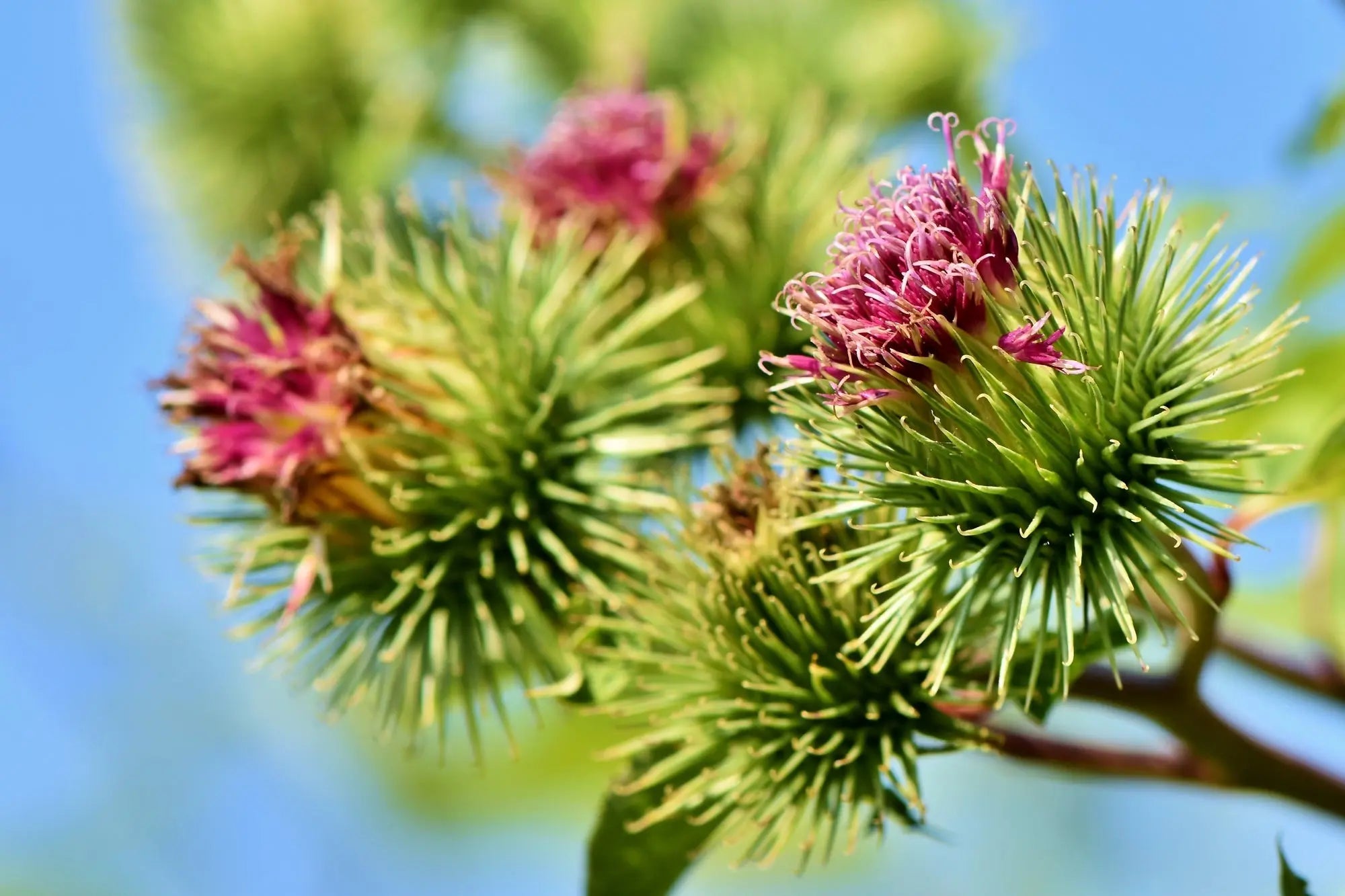Burdock, Arctium lappa, is a biennial plant from the family of daisies and sunflowers with a long history of use in traditional medicinal systems and culinary world. The root of burdock plant that looks somewhat like radish, but brown in color is used as a vegetable in East Asia; Japan Taiwan, and Korea. It’s added in stir fries, soups, salads, and is also consumed raw, on its own. In some areas, people also eat the stalks of immature flowers and leaves of burdock plant.
What Does Burdock Contain?
Burdock plant contains alkaloids, tannins, flavonoids, essential oils, polyacetylenes, fatty oils, polysaccharides, inulin, and sequisterpene lactones.
Inulin is a form of oligosaccharide, which gives burdock its insulin and glucose modulating properties and is also known to act as a prebiotic. Burdock root contains chlorogenic acid, which has strong blood-pressure lowering and antioxidant properties.
Burdock also contains decent amounts of dietary fiber, amino acids, potassium, and calcium.

A Brief History of Burdock Use
Burdock plant has been an integral part of both traditional medicinal systems and western folk herbalism for several thousand years. Even though it’s used for a variety of health purposes, it’s primarily valued for its ability to improve skin health. The herb is great for deep cleansing the skin and also helps improve its texture and appearance.
Native American tribes used burdock root to detoxify and purify blood and to get relief from joint pain and inflammation.There is also historical evidence of burdock roots’ use against sexually transmitted diseases. Another common traditional use of burdock is that of a natural diuretic.
Health Benefits of Burdock
Burdock plant has been known to offer a wide range of health benefits. Following are some of them:
Stimulates Lymphatic System
Lymphatic system plays the key role in removing toxins and waste from our body. Lymphatic system is also an essential part of the immune system. It transports the lymphatic fluid, called lymph, throughout the body. Lymph contains white blood cells that kill bacteria present in the blood. Healthy functioning of the lymphatic system is essential for overall health and burdock helps with that. The herb supports and strengthen the lymphatic system as well as stimulates lymphatic drainage.

It Is Great for Improving Skin Health
One of the most popular uses of burdock in modern times is for improving skin health. The herb is known to help improve skin’s overall health and appearance by improving lymphatic drainage, and detoxification of blood. It can also help with a range of skin issues.
The flavonoids, caffeic acid, cynarin, chlorogenic acid, and lignans (a category of polyphenols) present in burdock root have also shown anti-oxidative and anti-inflammatory properties, which also contribute to improving skin health and appearance. The polyacetylenes present in burdock have also been found to have antibiotic and anti-fungal properties.
Burdock Can Help Protect Liver and Improve Its Functioning
The many different types of powerful antioxidants present in burdock root also offer protective benefits to liver. They help shield the liver from the negative effects of toxins present in the body. Furthermore, burdock also contains several compounds that stimulate the production of bile juice, which then improves the liver’s ability to cleanse the blood. These are the same compounds that give burdock root its slightly bitter flavor.
Can’t find fresh burdock root in your area? You can get all the benefits of burdock root from our organic burdock tincture or capsules.




Share:
Learn the Herbs: Hawthorn
Learn the Herbs: Milk Thistle